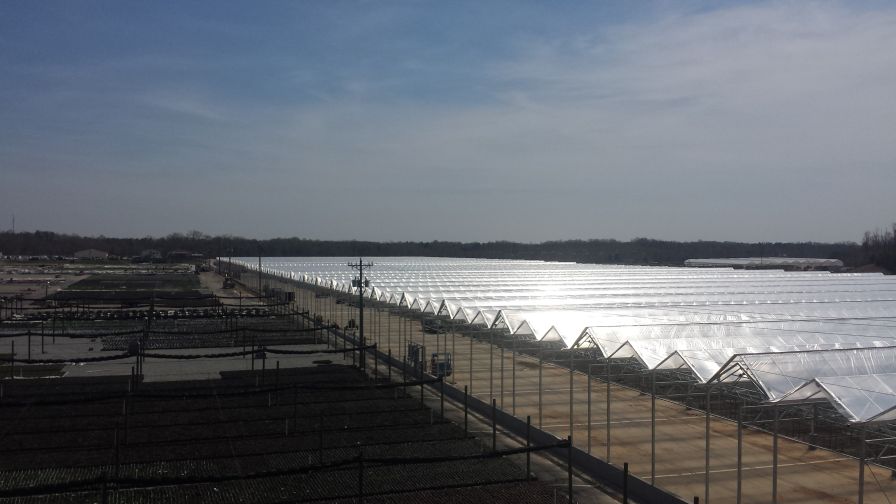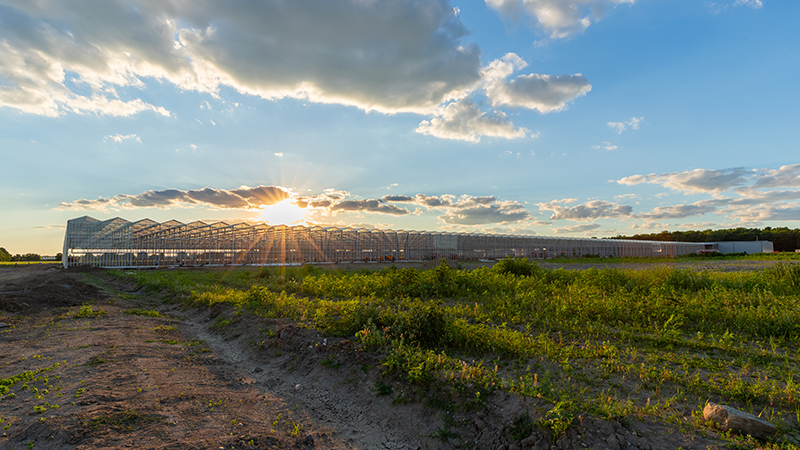Preparing Your Greenhouse for a Hurricane or Severe Storms

Photo: LLK Greenhouse Solutions
The brutal reality of Mother Nature is her unpredictability and tendency to throw things our way that we simply cannot stop. A hurricane can ravage any greenhouse unfortunate enough to be in its path and cause overwhelming damages that cost large sums of money to repair. Fortunately, there are ways to prepare your greenhouse so that damage is limited, and crops can be saved. Being prepared is the difference between incomprehensible damage and the ability to repair and recover.
Steps You Can Take Now, or Anytime, to Prepare
- Construct your greenhouse according to local building codes
- Check your connections and structural members, and remember to secure loose components
- Make sure glazing is properly installed, and keep additional inventory on hand for emergency covering
- Develop an emergency contact list (FEMA, insurance company, greenhouse supply, and construction contractor) and keep numbers and emails current
- Make a disaster recovery plan for key electronic and hard copy documentation
- Determine capacity, phase, portability, and quantity of generators needed
- Confirm access to such items as first aid supplies, weather radio, plumbing supplies, portable lights, batteries, lumber, nails, tarps, and ropes
- Conduct an annual or semi-annual review of insurance and know the limits of your insurance coverage. Plan for areas not covered (flood insurance), changes or improvements (new structures, computers, automated equipment, etc.), and business interruption coverage
- Develop pre- and post-hurricane responsibilities (insurance communication/management, crop mitigation, greenhouse mitigation, and portable water) and who should take ownership of these responsibilities
What to Do Right Before a Hurricane Hits
If you know a hurricane around your area is imminent, here are some immediate steps you can take:
- Irrigate plants
- Fill sprayers and any available portable containers with water
- Charge batteries
- Turn off natural and/or propane gas lines, water, and electricity
- Secure or take inside any items that can be picked up and hurled through glazing
- Inspect for dry or weak tree limbs that could fall on your greenhouse
- Remove greenhouse plastic and/or shade cloth if possible
- Lay large plants down with the container end toward the wind
- Place your most valuable plants in a protected place (box trailer)
- Secure greenhouse vents and, if possible, doors
- Tape shutters closed and turn on exhaust fans enough to create a vacuum in greenhouses with glazing other than plastic
- Print/secure plant inventory and fertilizer/pesticide inventory and store
After the Storm
Following a hurricane, here are some key actions you can take (when access back to the area is allowed):
- Survey for safety hazards such as downed electrical wires, leaking gas or flammable liquids, damage to foundations, etc.
- Notify the local fire department and/or police as appropriate
- Safely secure the site and assess damage
- Contact pre-designated key personnel, insurance company, and emergency contractors specialized in greenhouse mitigation/repair to coordinate and start repairs and salvage
- Begin salvage as soon as possible to prevent further damage to crops and structure. Items to consider include: separating damaged crops from undamaged crops; temporary placement of undamaged crop in an alternate area that has been secured; covering broken glass and/or damaged roofs; cover contents of buildings with tarps to minimize rain damage until emergency contractors can repair; making temporary repairs; cleaning and drying equipment, with the most critical objects receiving priority; removing standing water; dehumidifying most areas, especially moisture sensitive equipment; and inspecting all electrical equipment, including exposed insulators, bus bars, and conductors, before reenergizing electrical distribution systems and equipment
- Ensure that all safety procedures are properly supervised and enforced during salvage and repair operations.
Emergency Repair Contractor Checklist
Here are some key considerations when selecting a contractor to repair/mitigate damages to greenhouse:
- Contract with a professional company with skilled/experienced personnel in greenhouse design, supply, and installation. Make sure the company provides one point of contact throughout the entire process who can work with your team and the insurance company. Request references and/or examples of previous work from the contractor.
- Request and receive proper insurance documentation (workers’ compensations, liability, and excess/umbrella coverage) before any mitigation work begins.
- Request, receive, and execute a written proposal that outlines the scope of work and safety plan necessary to repair damages.
- Perform a walk-through of completed repairs with your greenhouse construction company.
Proper preparation is the key to protecting your greenhouse and the crops within. By following these steps, you can best defend yourself from the unpredictable and save both substantial amounts of money and stress. Lastly, remember that safety should be a top priority in all greenhouse activity, and should be considered in every aspect of your operation.
Click here for more information.








